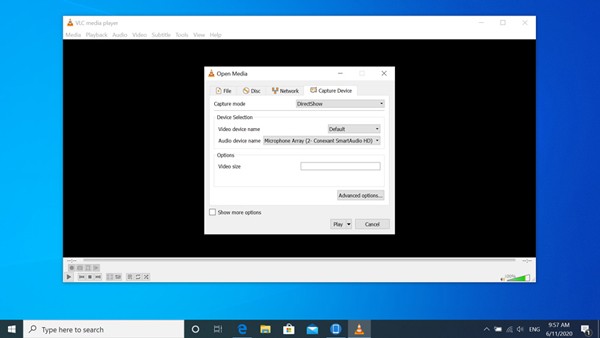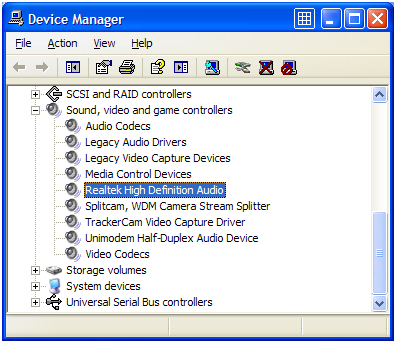
It will automatically manage streams on the network for you, while you setup your configuration on a higher level.
.net audiodevice Patch#
.net audiodevice code#
Most calls to SoLoud also return some kind of return code which may help you diagnose potential problems. If you don't, the audio thread may do stupid things while the application is shutting down. CleanupĪfter you've done, remember to clean up. Read the soloud.h header file (or this documentation) for further things you can do. tPan(x, -0.2f) // Use handle to adjust panning You can adjust various things about the sound you're playing if you take the handle. Note that you can play the same sound several times, and it doesn't cut itself off (but if that's what you want, there's an option for that too). Place playing commands wherever you need sound to be played.


GWave.load("pew_pew.wav") // Load a wave Play sounds This step varies from one audio source to another, but basically you'll load your wave files here. The call has a bunch of optional parameters if you'd rather pick the replay back-end and its parameters yourself the default should work for most cases. In your application, once you have your framework up (for instance after your SDL_Init call), include a call to initialize SoLoud. SoLoud:: Wav gWave // One wave file Initialize SoLoud Stack is probably a bad idea, but I'm not stopping you. Globals work, as do allocation from heap, including in a class as members, etc. You can play one object any number of times, even on top of itself.

If you're using five different sound effect wav files, you need five SoLoud:: Wav objects.

You need at least the SoLoud engine core, and one or more of the audio source variables. In order to use a certain feature of SoLoud, you need to include its header file. The backend with no audio device may seem odd, but that can be used to call SoLoud's mix function manually, which can be useful in some cases such as LibRetro. OpenAL via runtime dyndll linking (high latency) The current list of back-ends is: Preprocessor macro For example, for wav file playing, you'll need the files from audiosource/wav. If you're including the sources directly to your project, You'll need the core files, at least one backend, and at least one audio source.
.net audiodevice windows#
Note that the Windows DLL only exports the "C" API, which may not be what you want - it's primarily meant for foreign interface use. You can, for example, include all the SoLoud source files to your project, define one or more of the backend defines (see table below), and you're good to go.Ī bit more structured way is to use GENie / premake4 to create the build files, and build a static library for your compiler / environment. There's a few ways to include SoLoud to your project.
.net audiodevice download#
Download SoLoudįirst, you need to download SoLoud sources. If you're using SoLoud with some other environment SoLoud supports, you may want to skip this and look at the chapter that covers your environment (such as Python).


 0 kommentar(er)
0 kommentar(er)
